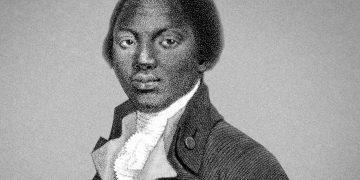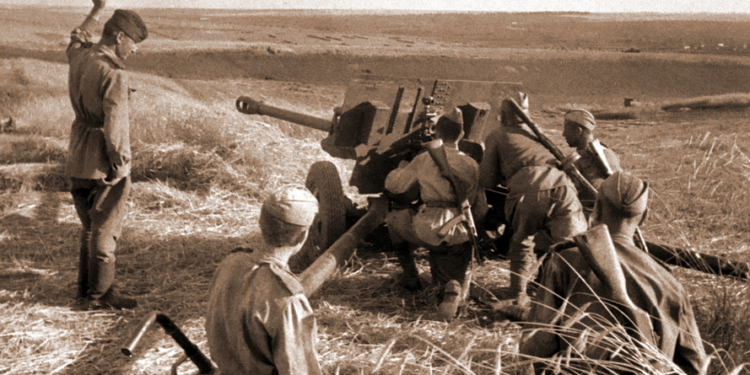The official history of the creation of the 76 mm ZiS-3 gun is widely known today. His appearance it owes the personal initiative of VG . Grabin, combining the swinging part of the 76-mm divisional gun F-22 (USV) and the carriage of the light 57-mm anti-tank gun ZiS-2. The main “innovation” was the transfer of the pointing handles to one side, which allowed the gunner to effectively control the gun when firing at moving targets. As a result, the ZiS-3 became the most massive artillery weapon of the war years, not devoid of its advantages and disadvantages. What did ZIS-3 report from the front?
Launched at Gorky Plant No. 92, which became the main manufacturer of the new gun, the ZiS-3 conveyor production made it possible in a short time to both compensate for the loss of artillery in the early years of the war and provide the guns with newly formed units, primarily anti-tank ones. Although the release of the 57-mm ZiS-2 gun was resumed in 1943, the 76-mm ZiS-3 remained in service with the anti-tank units of the Red Army until the end of the war.
As can be seen from this list, part of the drawbacks of the ZiS-3 was a logical continuation of its advantages. The carriage, developed, as already mentioned, for the 57-mm anti-tank gun, experienced heavy loads when firing. The muzzle brake, necessary to compensate for at least part of the recoil, often became the subject of complaints. In addition, as noted, its presence prevented the guns from firing on buckshot at enemy infantry.
The issue of shield cover was repeatedly raised in correspondence. In some parts, they even independently resolved this issue in a radical way, completely removing the shields from the guns. But, as combat practice has shown, this solution, although it helped to mask the guns on the ground, after the opening of the fire led to an increase in losses in the calculations, especially in cases when enemy infantry broke through to the positions of the anti-tank.
As everyone who watched the Soviet film “Battalions Ask for Fire” remembers, the main means of traction for the divisional cannons was a horse cart. The situation was slightly better in specialized anti-tank units, but there was always a shortage of armored personnel carriers to transfer at least all anti-tank divisions of rifle divisions to the autotractor of the Lend-Lease Dodge 3/4 . Of course, everyone understood that an all-terrain vehicle, and even more so an armored personnel carrier, would be much better in this role – greater stability under fire, greater speed and the ability to maneuver during combat.
The issue of shells was sore for Soviet artillery even before the outbreak of war. Of course, the fact that a brass sleeve is better was not a secret for anyone, but even before the war it was a very expensive pleasure. Its copper production did not cover all needs, and the USSR had to buy it abroad. For example, in October 1939, the Soviet representative in Belgium, E.V. Rubinin agreed on direct deliveries from the Belgian Congo, reporting to Moscow: “ Based on what trade representative Kuzmin told me, I told Spaak that we can take copper directly from Congo so that we ship a whole ship each time.”
As a result, some decisions – for example, the transition from a separate shotgun loading to a unitary unit or increasing the power of a shot due to the introduction of larger volume shells – the gunners had to evaluate from the point of view of copper consumption.
During the war, in conditions of a total deficit of non-ferrous metals, even the creation of special teams for collecting spent cartridges did not solve the problem. The choice was often simple – either iron sleeves or nothing. At the same time, the adjustment of the production of the very iron “rolled-up” sleeves that they tried to deploy before the start of the war is a separate issue. The Soviet Union managed to finally solve the problems of the production of steel sleeves only after the war. The Germans used steel sleeves already in 1942.
July 24 ’19 “Is in the position of a street child …”
August 07 ’19 “Satisfies the requirements of the infantry …”
November 06, ’19 The weighty argument of the Soviet infantry
November 13, ’19 “Missing machine guns …”
December 17, ’19 Biting “weaving”
January 16, ’20 “It is advisable to use centrally …”
January 23 ’20 “Good but not enough”
February 27, ’20 “Forty”, bored and indispensable
March 10, ’20 “Hunchback” in an unusual perspective
March 17, ’20 Puggy “Columbine”












